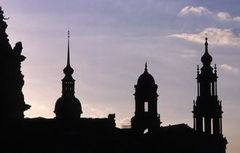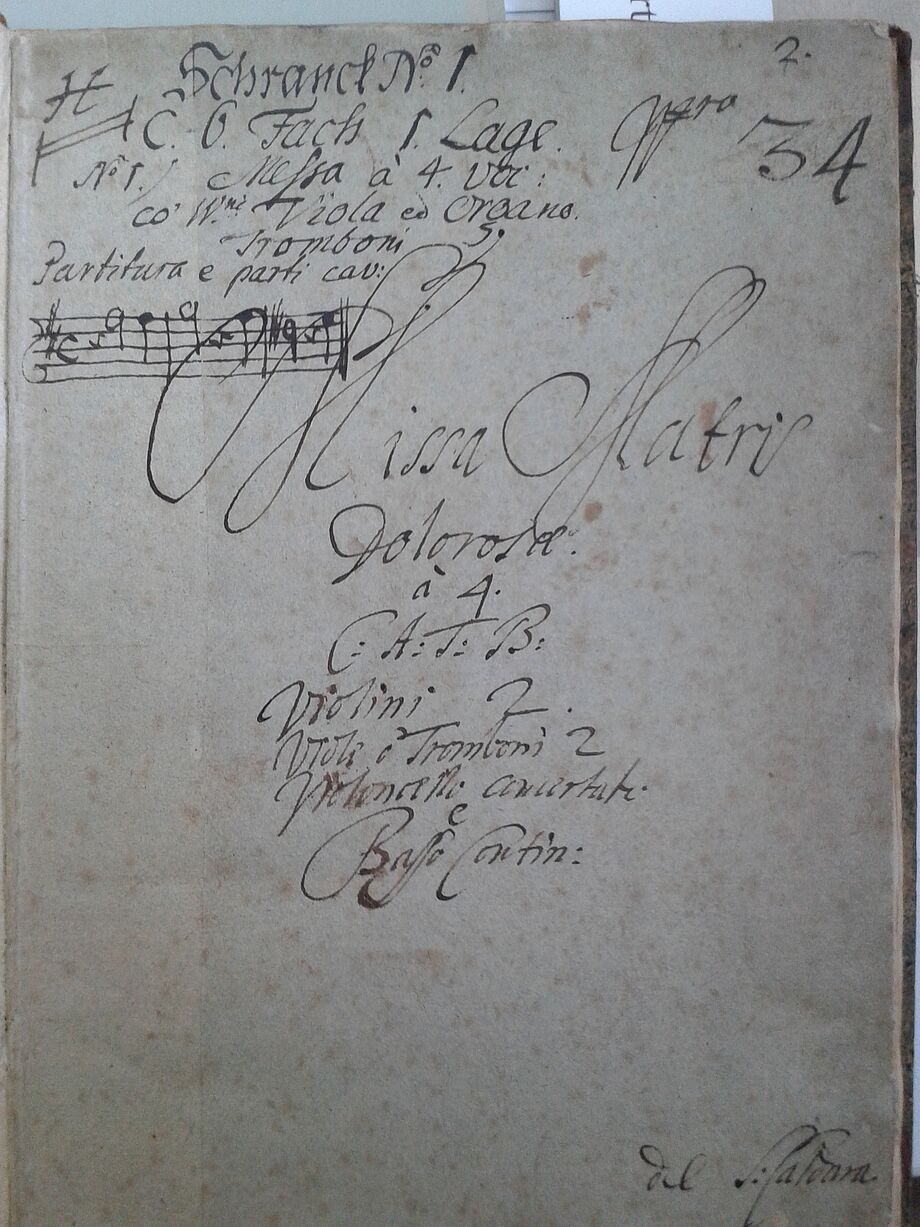On the Trail of the Music at the Dresden Court
Nina Eichholz
Monday, September 1, 2014

The following article is by Nina Eichholz and was originally published on the SLUBlog. We are publishing it here with the kind permission of the SLUB Dresden.
The second SLUB project began one year ago to catalog its valuable music materials from the time of the Saxon-Polish union (1697-1763). Financed by the German Research Foundation (DFG), this project focuses on the core of the Royal Private Music Collection and the music collections of the Catholic Court Church. It continues the work of the previous project “Schrank no: II,” which concentrated on the instrumental music of this period. The era of the Saxon-Polish union, also called the Augustan Age, is considered to be the most splendid chapter of Dresden music history. The new Hofmusik (court music) website, which also has information about the project “Dresdner Opernarchiv digital” (Dresden Digital Opera Archive), is now online.
The Project
The music from the time of the Saxon-Polish union is particularly valuable in terms of the significance of individual composers and the comprehensiveness of the collections. This project will make the collections and their sources visible in their historical context, and related sources held by other libraries will also be taken into consideration alongside the materials held by the SLUB.
Musicologists examine the ca. 1,500 extant manuscripts, including numerous autograph manuscripts, and describe them in detail using the special cataloging program Kallisto. The project thus documents musical content, information on scoring, and source-specific criteria such as the time of origin of the manuscripts, names of copyists, and whether the source is a score or part. The descriptions are fed into the RISM international database, which documents music manuscripts from over 900 libraries and archives worldwide and makes the data searchable online at no cost.
In addition, the materials are fully digitized by the SLUB Digitization Center and furnished with a digital table of contents, which facilitates navigation of these often complex digital documents. The digital versions are then available to users through the SLUB Digital Collections page at no charge and can be accessed through the RISM online database and the SLUB catalog. Here the music, which is often preserved in very clean copies, can be directly used for different purposes, such as by musicians for performance. Music researchers as well can profit from immediate (digital) access to the compositions–most of which are unpublished–and from the study of the historic original sources.
The Royal Private Music Collection
Research on the Royal Private Music Collection concentrates on the collections of Elector Friedrich August II, his wife Maria Josepha, and his daughter-in-law Maria Antonia Walpurgis.
These collections, which even in August II’s day were documented in special catalogs, reflect the fondness for music of their arts-minded owners. Friedrich August II, who in his youth spent a number of years in Italy, developed a soft spot for Italian music. Even as a young man he engaged the Venetian composer and opera impresario Antonio Lotti for the Dresden court, whose works include festive operas written for the occasion of the marriage of Friedrich August to Maria Josepha in 1719, and the young, Italian-minded composer Johann David Heinichen. After the death of his father August the Strong in 1733, Friedrich August II finally won the internationally renowned composer Johann Adolph Hasse for the Dresden court as First Kapellmeister, who dominated until the end of the Seven Years’ War and enriched musical life with his numerous oratorio and opera productions in particular.
Maria Antonia’s collection is also significant in that it reflects the development of opera and oratorio music in Dresden and beyond from ca. 1745 to 1780. The private collections contain instrumental music in addition to secular and sacred vocal works.
Music of the Catholic Court Church
With August the Strong’s conversion to Catholicism in 1697, the need became apparent for a new repertoire of Catholic church music at the Dresden court. After an initial phase of tentative attempts, church music performances took place with increasing regularity beginning in 1721 through the influence of Maria Josepha. A repertory developed with a variety of genres and styles. The protagonists of this era were the kapellmeister Johann David Heinichen and the church composers Giovanni Alberto Ristori and Jan Dismas Zelenka. Additional repertoire grew out of travels to Naples and Venice by members of the House of Wettin and from further dynastic and institutional connections in Vienna and Bohemia. The sources preserved here are often unique and of particular musical importance.

Category: New at RISM

